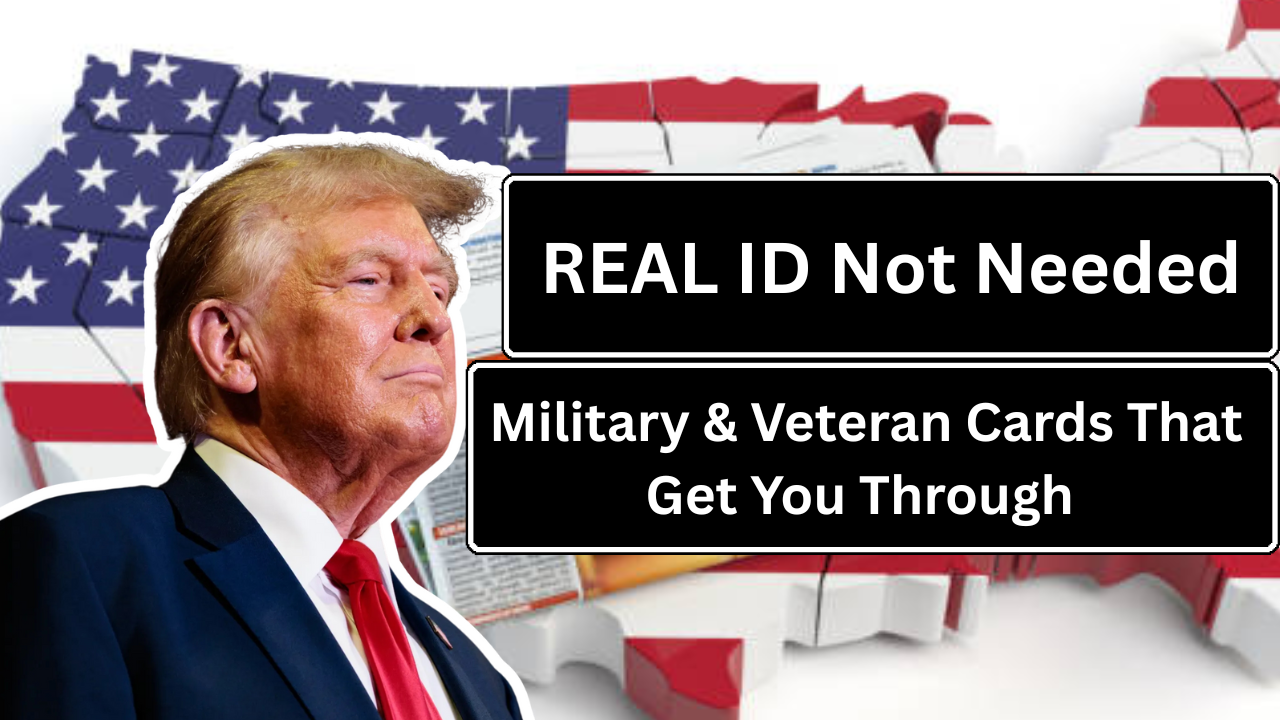As of May 7, 2025, the U.S. Transportation Security Administration (TSA) has begun full enforcement of the zREAL ID Act, requiring travelers aged 18 and older to present a REAL ID-compliant driver’s license or another acceptable form of identification to board domestic flights and access certain federal facilities. While this change has led to confusion and long lines at Department of Motor Vehicles (DMV) offices nationwide, military personnel and veterans can breathe a sigh of relief: several Department of Defense (DoD) and veteran-issued IDs remain valid alternatives to a REAL ID.
Understanding the REAL ID Requirement
The REAL ID Act, enacted in 2005, established minimum security standards for state-issued driver’s licenses and identification cards. After multiple extensions, the enforcement deadline took effect on May 7, 2025. Travelers without a REAL ID-compliant license must now present an alternative acceptable form of identification at TSA checkpoints. Acceptable forms include U.S. passports, passport cards, and certain federally issued IDs.
Acceptable Military and Veteran IDs
The TSA recognizes several military and veteran identification cards as acceptable alternatives to a REAL ID for domestic air travel:
- Common Access Card (CAC): Issued to active-duty military personnel, selected reserve members, DoD civilian employees, and eligible contractors.
- Uniformed Services ID Card: Provided to retirees, dependents, and other eligible individuals affiliated with the military.
- Veteran Health Identification Card (VHIC): Issued by the Department of Veterans Affairs (VA) to veterans enrolled in the VA health care system.
These IDs are considered secure federal credentials and are listed among the TSA’s acceptable forms of identification.
Potential Challenges and Recommendations
Despite official guidelines, some travelers have reported inconsistencies at TSA checkpoints regarding the acceptance of military and veteran IDs. Instances include TSA officers questioning the validity of certain IDs or being unfamiliar with the policies.
Carry a Backup ID
If possible, bring a secondary form of identification, such as a U.S. passport, to ensure smooth processing.
Request a Supervisor
If a TSA officer questions the validity of your military or veteran ID, politely request to speak with a supervisor for clarification.
Stay Informed
Regularly check the TSA’s official website for updates on acceptable identification forms and policies.
Additional Resources
For more information on the REAL ID Act and acceptable forms of identification:
- TSA Acceptable IDs: (TSA)
- Department of Homeland Security REAL ID Information: (U.S. Department of Homeland Security)
- REAL ID FAQs: (U.S. Department of Homeland Security)
Conclusion
While the enforcement of the REAL ID Act introduces new requirements for domestic air travel, military personnel and veterans with appropriate identification can continue to travel without disruption. By staying informed and prepared, travelers can navigate the changes smoothly and ensure compliance with TSA regulations.





